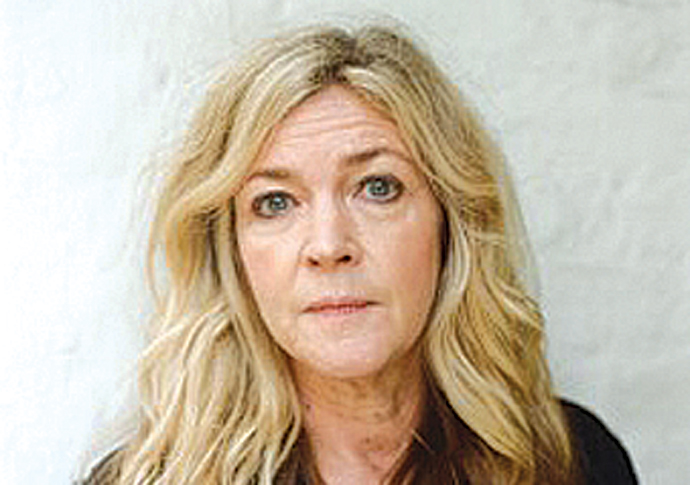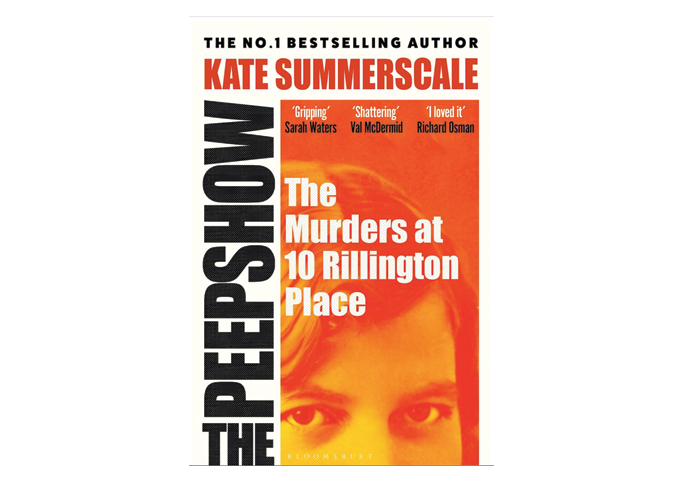House of horror: how murders of women inspired extraordinary book
Peter Gruner talks to Kate Summerscale about her latest book, which looks behind the door of 10 Rillington Place
Friday, 31st October — By Peter Gruner

Kate Summerscale, author of Peepshow: The Murders at 10 Rillington Place
WEST Hampstead writer Kate Summerscale says recent murders of women inspired her new award-winning book, The Peepshow: The Murders at 10 Rillington Place.
In an interview with Review she said she was particularly concerned with the issue of men murdering women who were complete strangers.
“I was horrified by the murders of sisters Bibaa Henry and Nicole Smallman, in Fryent Country Park, Brent, in 2020 a few miles from where I live.”
Their mother Mina Smallman is a retired Anglican priest.
“Then, a year later in March 2021, another terrible story, marketing executive Sarah Everard was picked out and murdered by a Met police officer.”
Peepshow is an extraordinary book, which not only deals with the infamous murders of women by multi-murderer John Reginald Christie, but also conjures up difficult life and times in London in the early 1940s and 1950s.
The book, which won the Gold Dagger Award for non-fiction, features Christie, an accountants clerk and former policeman, and his meetings with a top journalist of the time, Bloomsbury-based Harry Procter.
Summerscale – famous for the bestselling The Suspicions of Mr Whicher – delves into the lives of Christie’s victims, the sensationalist reporting of the time, society’s conditions that made women fearful, while also exploring the truth behind the infamous case.
She says she began thinking about why some men choose to kill women, specifically because they were women, not because they had any personal history or grudge against them, and the story of Christie dimly came to her.

“I’d seen his figure in a wax works museum when I was eight years old. I’d watched the film about the murders on late-night TV when I was in my teens. I knew hardly anything about it, but I had a sense that he was perhaps the most notorious serial killer in Britain in the years immediately after the Second World War.”
Christie was an English serial killer and rapist, active during the 40s and early 50s. He murdered at least eight women – including his wife Ethel – by strangling them inside his flat at 10 Rillington Place, Notting Hill.
The bodies of three of his victims were found in a wallpaper-covered kitchen alcove soon after he had moved out of the flat during March 1953. The remains of two more victims were discovered in the garden, and his wife’s body was found beneath the floorboards in the front room.
Christie was eventually arrested and convicted of his wife’s murder, for which he was hanged.
We meet star crime reporter for the Sunday Pictorial, (renamed Sunday Mirror in 1963) Harry Proctor at the beginning of the book. He is known for his scoops and sensational exposes. “At 36, after a decade-and-a-half in Fleet Street, he looked like a weathered cherub”, Summerscale writes.
“Harry drank, he smoked. He had tousled brown hair, pale skin, soft bags beneath his eyes.”
After Christie’s crimes are discovered, Harry is astonished to think that he had a few years earlier interviewed him about his fellow tenant, Tim Evans.
Evans had been charged with the murder of his wife and child and was found guilty and hanged.
Harry feels guilty about suspecting the wrong man. There was plenty for the reporter to investigate.
The war had nearly bankrupted Britain and though the Labour government of 1945-51 had introduced extensive health and welfare reforms, the living conditions of many Britons remained terrible.
A severe housing shortage caused partly by bomb damage and partly by a wartime moratorium on building, enabled landlords to charge huge rates for squalid premises.
Also featured in the book is St John’s Wood true crime writer Fryn Tennyson Jesse, who attended many of the trials. She wrote an influential 1957 essay linking Christie to the Evans case.
In this bleak post-war London women may have had particular reasons to be fearful. Many turned to prostitution to pay the bills and could have been at risk from predatory men.
Summerscale writes that 10,000 prostitutes were thought to be working in London in 1951, making an estimated quarter of a million transactions a week.
• The Peepshow: The Murders at 10 Rillington Place. By Kate Summerscale, Bloomsbury, £9.89